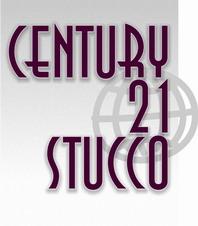ACRYLIC FINISH VS. STUCCO FINISH
Stucco has traditionally been a three-coat cement system as described by all model building codes. Within the last decade, acrylic has become very popular as an alternative finish coat to the traditional "stucco" finish. Both finish coats are excellent finish materials, can be integrally colored and are vapor permeable, but this is where the similarities end.
As with most things in life, there are advantages and disadvantages to each material. The first important step is not to confuse the two finishes with each other. Stucco is defined by Webster's dictionary as "an exterior plaster made of cement, lime and sand." While stucco is a natural cement product, acrylic finish is a synthetic man-made coating. Stucco cures to a hardened state while acrylics dry to their final hardened state. This is a critical difference when considering environmental conditions during application.
Designers must choose which finish material is most appropriate for the building and best meets the desires of their client. A checklist of the desired aspects is one good way to help decide which material should be used.
TEXTURE:
Stucco cement finish has a larger variety of textures from Californian, trowel and dashes. The finer/smooth textures are not recommended with stucco, as the fracture lines will be more visible. Texture helps hide the fractures lines. While acrylics have some range of texture, most acrylics are applied in a sand-finish texture, and the wide-range of texture choices is not their strong suit.
COLOUR:
Acrylic finishes can come in just about any color imaginable and can be matched to almost any shade desired. The consistency of colour is very good with acrylics, even in darker shades. Stucco, being cement based, can only hold so much pigment, and dark tones are not recommended (they can dry inconsistent). Stucco works best in light - medium pastel shades, and some slight variation in colour shade should be expected. This is particularly true with stucco sand- finish texture. Coloured cement stucco can be "fog" coated, which is a good method to improve the color consistency.
APPLICATION:
Acrylics dry from the outside in and can be sensitive to environmental conditions. Acrylic finish should not be applied in temperatures below (4
degrees C). Sometimes air circulation is more important for drying than temperature, especially in humid conditions. Cement stucco finish "cures" as opposed to drying and can be applied in temperatures as low as (2 degrees C).
The stucco cement plaster basecoat must be cured a minimum of seven days before applying acrylic or stucco, but a longer cure time is beneficial-it gives the building additional time to "find itself or settle before the finish coat is applied.
WATER REPELLENT INFO:
Traditional cement stucco, like all cement products, will absorb surface moisture and darken when wet. Acrylics, similar to a nylon stocking, will repel surface moisture, but moisture will pass through as a vapor. Acrylics should never be mistakenly used or sold as a method to "seal" the building from water intrusion. Properly applied stucco cement plaster basecoat will seal moisture out and be vapor permeable. It is advisable that finish coat materials, including paint, be a "breathable" membrane. Acrylic finishes should never be used on flat surfaces or other areas of possible standing water, as they can soften with prolonged exposure to moisture. An advantage of acrylic finishes is that they retain their color when wet and are particularly desirable in wet climates, again, not to seal, but to stay one constant shade of color even when wet.
Many cement stucco manufacturers offer clear sealers that will provide the same water-repellent benefit as acrylics. Most last only a year or two and may have to be reapplied every few years. This is a simple procedure and not very expensive.
MAINTENANCE:
Acrylic finishes are relatively low maintenance and can be painted when a change of color is desired. The life expectancy of a stucco finish coat has been proven to be several decades. Acrylics have been applied to cement basecoats in Seattle and BC for over 15 years, and many of these original finish coats are holding up quite well.
CONCLUSION:
Both finishes have strong points and limitations. I suggest designers/owners look at a building with traditional stucco and one with an acrylic finish before making a final decision. Whether you use stucco or an acrylic finish, it is always important to follow manufacturer’s recommendations and guidelines.
|
